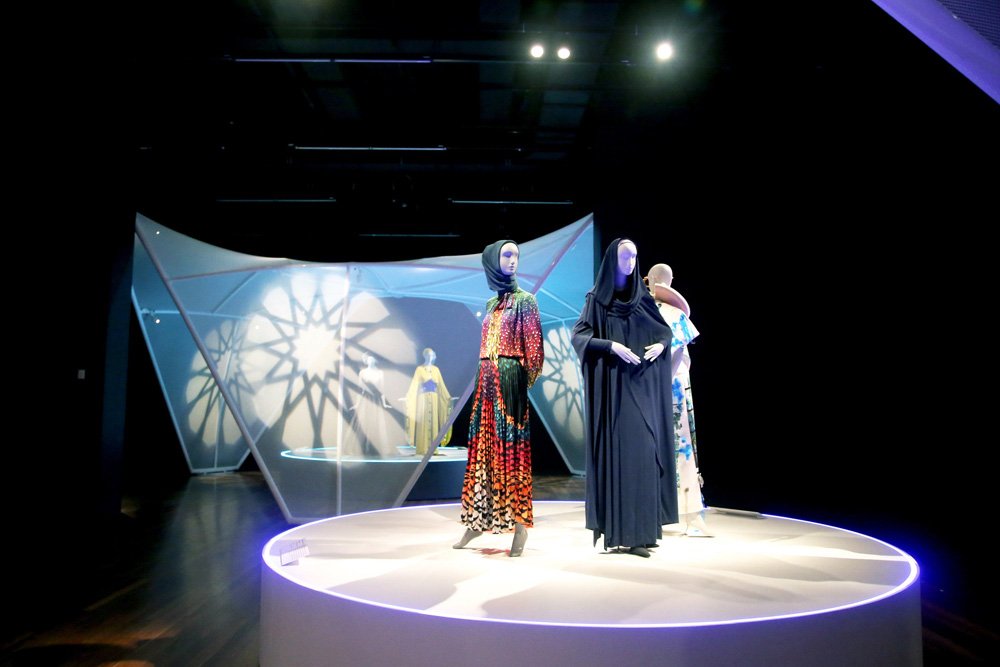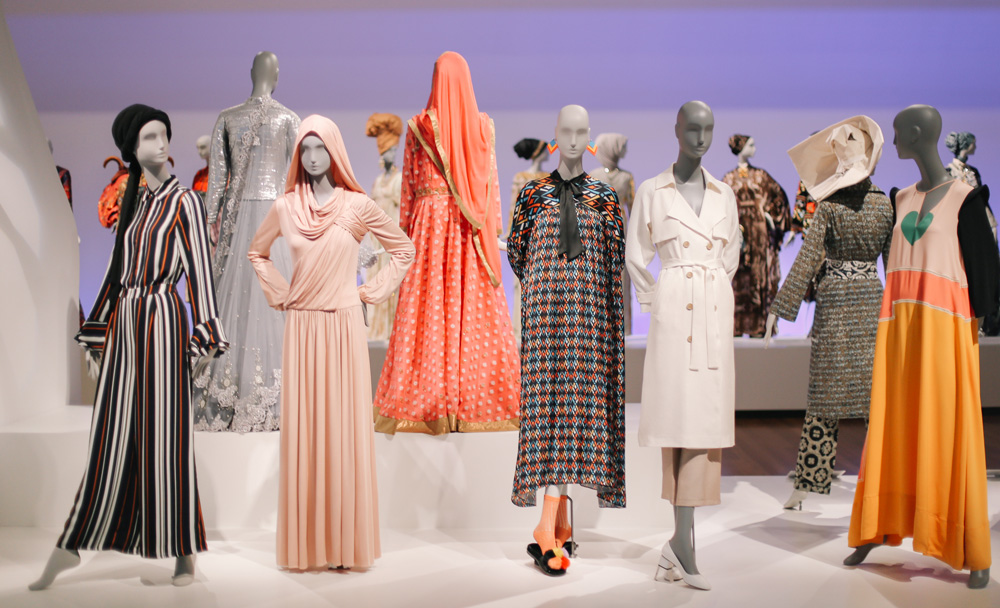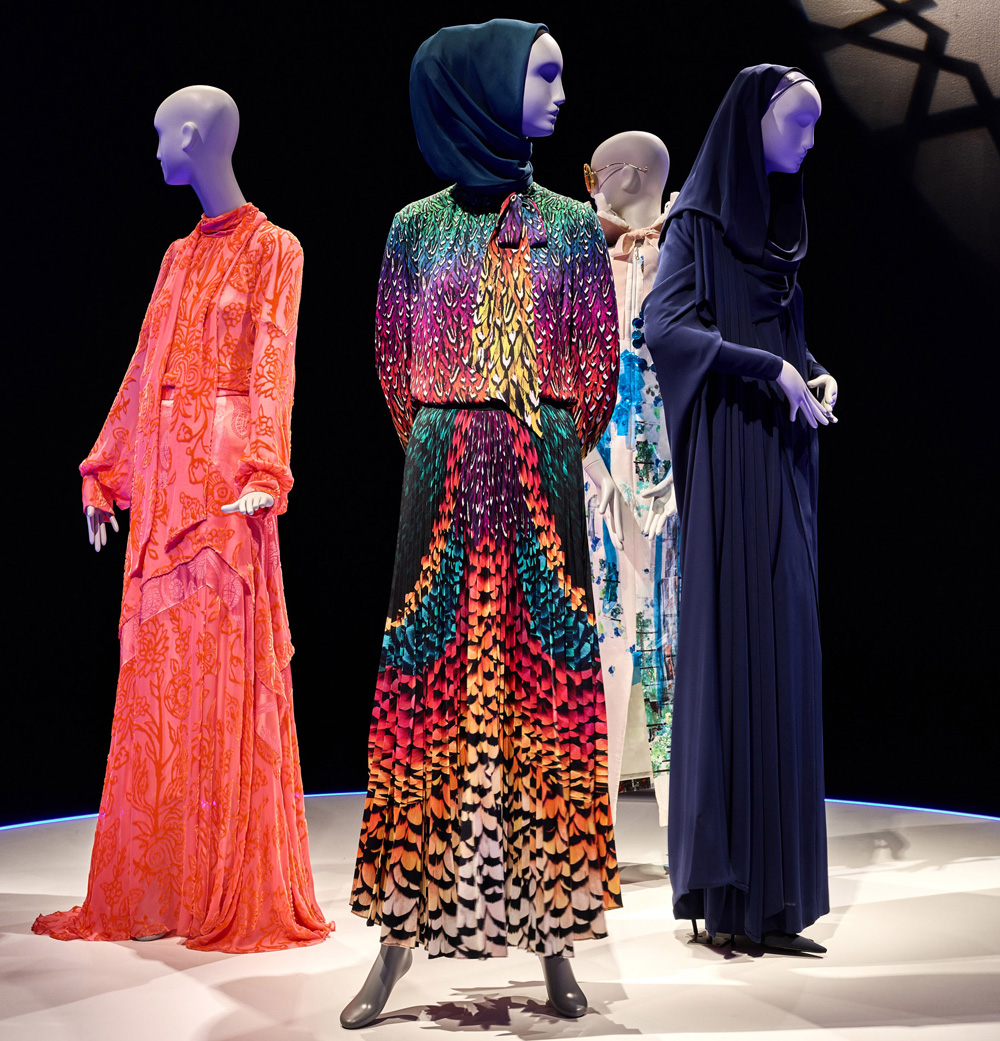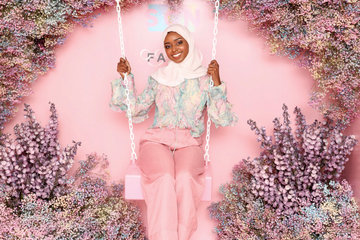
From Dolce & Gabbana’s first abaya collection to Uniqlo’s line with Muslim designer Hana Tajima and Nike’s Pro hijab, Islamic style has become extensive, vibrant, and influential in the last couple of years. The rapidly changing and expanding global market is also extremely profitable, with The State of the Global Islamic Economy Report by Thomson Reuters and DinarStandard forecasting Muslims around the world will spend $373 billion by 2022. This has encouraged more and more labels to join the fray and come up with special Ramadan collections.
Given that a quarter of the world’s population identify as Muslim as well, the time has definitely come for the first major exhibition that delves into the multifaceted, diverse dress codes of Muslims around the world.

That’s why 'Contemporary Muslim Fashions' is taking over San Francisco’s de Young museum, which is part of The Fine Arts Museums of San Francisco, until 6 January. The eye-popping and colourful multimedia exhibit highlights how Islamic style has evolved and how Muslim women are becoming arbiters of style and driving forces within their communities and just about everywhere else. And as it focuses on clothing for Muslim women, the exhibition is a great way for the community to express and present itself, helping to clear misconceptions.

The show, curated by Jill D’Alessandro and Laura Camerlengo, in consultation with British Reina Lewis, centres around designers from Muslim majority countries throughout the globe, especially where there is a budding energetic and creative fashion scene. It features around 80 ensembles, including elaborate wedding gowns, workwear, sportswear like burkinis, street wear and glamorous eveningwear. Interestingly, the exhibition space, planned by Iranian-American architecture firm Hariri and Hariri, is a visual metaphor, with the curved lines simulating a woman covering herself.
The Middle Eastern galleries include labels like Saudi Arabia’s Masheal, as well as UAE-based brands Bouguessa and The Modist. Plus designers from Malaysia and Indonesia, including Haslinda Rahim of Blancheur, Itang Yunasz and Dian Pelangi, represent South-East Asia.

Digital influencers, including Leah Vernon and Iranian-American Hoda Katebi, also have a role in the exhibition, where there is a section on social media, as well as runway footage, news clips and documentary and fashion photography. London-based Moroccan pop-artist Hassan Hajjaj, who has a display of printed and non-black hijabs, is one of the names helping to change perceptions.
Additionally, the show involves emerging designers, as well as some diasporic communities based in Europe and the US. For example, it features pieces from British athleisure entrepreneurs Yasmin Sobeih and Sarah Elenany, plus designs by New York-based label Slow Factory, which was launched by Lebanese-born fashion activist Celine Semaan.

The exhibition also showcases custom designs that accommodated religious considerations from renowned designers like Oscar de la Renta and Yves Saint Laurent. Couture wedding ensembles for a Middle Eastern princess by Valentino, Dior and Stéphane Rolland enhance the show too.
“Contemporary Muslim Fashions” will move to Frankfurt’s Museum Angewandte Kunst, where visitors can catch it in the spring.
















